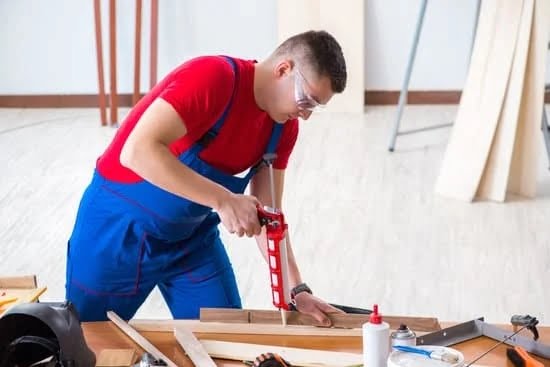In today’s fast-paced and technology-driven world, the value of hands-on learning cannot be overstated. As education evolves, educators and parents alike are recognizing the importance of providing students with opportunities for tactile experiences that engage their minds and bodies. One such avenue for this type of learning is through woodworking, an activity that has long been a part of school curriculum with proven benefits for student development.
Woodworking has a rich history in education, dating back to ancient times when it was an essential skill for survival. Throughout history, woodworking has been integrated into school programs as a way to teach practical skills and foster creativity. In recent years, however, there has been a renewed focus on the cognitive and physical benefits of hands-on activities like woodworking for students of all ages.
Engaging in hands-on activities such as woodworking can have significant cognitive and physical benefits for students. From developing fine motor skills to enhancing spatial reasoning and problem-solving abilities, the act of creating tangible objects from raw materials can have a profound impact on a student’s overall development.
As we delve deeper into the role of hands-on learning in modern education, it becomes evident that woodworking offers unique advantages that contribute to a well-rounded educational experience for students.
The History of Woodworking in Education
Woodworking has a long-standing history in education, dating back to ancient civilizations where woodworking skills were essential for survival. The incorporation of woodworking into school curriculum can be traced back to the early 20th century when manual training and industrial arts programs gained popularity in educational institutions. These programs aimed to teach students practical skills such as woodworking, metalworking, and drafting, which were considered valuable for future careers in various industries.
During the Industrial Revolution, there was a shift towards more academic-focused education, leading to a decline in hands-on learning opportunities like woodworking. However, in recent years, there has been a resurgence of interest in incorporating hands-on activities back into the curriculum, recognizing the numerous benefits they offer to students.
The resurgence of woodworking in schools aligns with the growing emphasis on learning through experience and application. It provides students with an opportunity to engage their hands and minds simultaneously, promoting holistic learning. Research has shown that hands-on activities like woodworking can lead to improved retention of knowledge and enhanced problem-solving abilities.
A study published in the Journal of Educational Psychology found that students who engaged in hand-on learning activities performed better academically than those who did not. This is why woodworking in schools benefits students by providing them with a well-rounded education that goes beyond traditional classroom learning.
| Year | Event |
|---|---|
| Early 20th century | Manual training and industrial arts programs gain popularity |
| Modern times | Resurgence of interest in hands-on learning and woodworking |
| Current times | Evidence supporting academic benefits of hands-on learning |
The Benefits of Hands-on Learning
Woodworking in schools benefits students in numerous ways, particularly when it comes to hands-on learning. Engaging in activities like woodworking can have both cognitive and physical benefits for students. One of the main reasons why woodworking in schools benefits students is that it provides a practical application of academic concepts.
Through woodworking, students can see the real-world implications of mathematical and scientific principles, as they measure, cut, and assemble materials to create tangible projects. This hands-on approach can help reinforce their understanding of these concepts and make learning more meaningful.
Moreover, engaging in woodworking can also contribute to the development of fine motor skills and hand-eye coordination. Using tools and manipulating wood pieces require precision and control, which can help students improve their dexterity and coordination. Additionally, this type of activity can also foster an appreciation for craftsmanship and attention to detail, as students strive to create well-crafted pieces through careful planning and execution.
Furthermore, woodworking allows for opportunities to learn through trial and error. Students may encounter challenges or mistakes while working on a project, which provides them with the chance to problem-solve and develop resilience. This process not only teaches them valuable life skills but also helps build their confidence as they overcome obstacles throughout the creative process. Therefore, it is evident that incorporating woodworking into school curriculum offers a range of cognitive and physical benefits for students.
| Benefits | Description |
|---|---|
| Practical Application of Academic Concepts | Woodworking provides hands-on application of mathematical and scientific principles. |
| Fine Motor Skills Development | Engaging in woodworking helps improve dexterity, precision, and hand-eye coordination. |
| Problem-Solving and Resilience | Woodworking allows opportunities for learning through trial and error while developing problem-solving skills. |
Creativity and Problem-Solving
Woodworking in schools provides students with a unique opportunity to develop their creativity and problem-solving skills. Engaging in hands-on activities like woodworking allows students to think critically, come up with innovative solutions, and experiment with different designs. Through the process of planning and executing a woodworking project, students are able to exercise their creative thinking skills and learn how to troubleshoot any issues that may arise.
One of the key benefits of incorporating woodworking into the school curriculum is the opportunity it provides for students to use their imagination and explore their own ideas. Unlike traditional classroom learning, where there may be one correct answer or approach, woodworking allows for open-ended exploration and encourages students to think outside the box. This fosters a sense of autonomy and independence, as students are empowered to make their own design choices and problem-solve on their own.
In addition to nurturing creativity, woodworking also helps students enhance their problem-solving abilities. Whether it’s figuring out the best way to assemble pieces or finding alternative solutions when faced with challenges, woodworking teaches students how to adapt and overcome obstacles.
This skill is transferable to various aspects of life, as it instills in students the confidence and resilience needed to tackle real-world problems. Ultimately, woodworking not only cultivates creativity but also equips students with valuable problem-solving skills that they can carry with them beyond the workshop.
- Encourages creative thinking
- Promotes independent decision-making
- Fosters problem-solving abilities
The Practical Skills Acquired
Woodworking in schools offers students the opportunity to acquire a variety of practical skills that can be beneficial both inside and outside the classroom. Through engaging in woodworking projects, students learn essential skills such as measuring, cutting, and assembling, which are applicable to a wide range of real-world scenarios.
Measuring
One of the fundamental skills that students develop through woodworking is the ability to accurately measure materials. Whether it’s determining the length of a piece of wood or calculating the dimensions for a project, learning how to measure precisely is an important skill that can be applied in fields such as architecture, engineering, and construction.
Cutting
Woodworking also teaches students how to safely and effectively use tools such as saws and cutters to shape wood according to specific measurements. This skill not only promotes dexterity and hand-eye coordination but also instills a sense of responsibility in handling sharp tools. These abilities are transferable to careers in carpentry, manufacturing, and design.
Assembling
Furthermore, woodworking allows students to understand how individual components come together to form a finished product. Whether it’s constructing a simple stool or building a bookshelf, learning how to assemble various parts reinforces critical thinking skills and an understanding of spatial relationships.
By acquiring these practical skills through woodworking, students are better prepared for future careers and life skills where precision, craftsmanship, and problem-solving abilities are highly valued. Through hands-on experience with woodworking tools and materials, students gain valuable expertise that goes beyond traditional academic subjects.
Building Confidence and Self-Esteem
Woodworking in schools benefits students in a variety of ways, from developing practical skills to fostering creativity and problem-solving abilities. One significant benefit is the impact it can have on students’ confidence and self-esteem. Engaging in hands-on activities like woodworking allows students to see tangible results from their efforts, which can be incredibly empowering.
One of the reasons why woodworking in schools benefits students is that it provides them with the opportunity to take on challenging tasks and see them through to completion. This sense of accomplishment can boost their self-confidence and help them develop a positive self-image. When students are able to create something with their own hands, it gives them a sense of pride and achievement, which can have a lasting impact on their overall well-being.
In addition to building confidence, woodworking also helps students develop perseverance and resilience. They learn that mistakes are a natural part of the process and that they have the ability to overcome obstacles and create something valuable despite setbacks. These experiences contribute to a growth mindset and empower students to tackle new challenges with confidence. Ultimately, woodworking provides a unique opportunity for students to build their sense of worth and capability through hands-on learning experiences.
- Woodworking requires precision and focus
- Students feel accomplished after completing projects
- Encourages perseverance and resilience
Fostering a Sense of Accomplishment
Woodworking projects can be incredibly rewarding for students, as they provide a tangible outcome that showcases their hard work and skill. This sense of accomplishment can be immensely beneficial for students, as it allows them to see the results of their efforts in a real and meaningful way. Completing a woodworking project from start to finish instills a sense of pride and satisfaction in students, boosting their self-esteem and confidence.
Building Something From Nothing
One of the most satisfying aspects of woodworking is the process of bringing something new into existence. From selecting the raw materials to measuring, cutting, and assembling the pieces, students have the opportunity to create something entirely unique with their own hands. Witnessing their creation take shape and come to life can instill a sense of wonder and achievement in students that cannot be replicated through theoretical learning alone.
Overcoming Challenges
Woodworking often presents students with challenges that require problem-solving and critical thinking skills to overcome. Whether it’s figuring out how to join two pieces of wood seamlessly or troubleshooting issues during the construction process, students are constantly faced with opportunities to develop resilience and perseverance. Overcoming these obstacles contributes to a greater sense of accomplishment when the project is completed successfully.
Recognizing Personal Growth
As students progress through woodworking projects, they have the chance to reflect on their growth both in terms of technical skill and personal development. Seeing improvement in their abilities over time can reinforce a positive mindset and encourage them to tackle increasingly complex projects. This recognition of personal growth further enhances their sense of accomplishment and motivates them to continue challenging themselves in their woodworking endeavors.
Overall, fostering a sense of accomplishment through woodworking projects can have lasting effects on students’ self-esteem, motivation, and overall well-being. Encouraging this kind of hands-on learning experience can play a crucial role in shaping well-rounded individuals who are prepared for future success.
The Role of Woodworking in Modern Education
In conclusion, the role of woodworking in modern education is vital in preparing students for future careers and life skills. Engaging in hands-on activities like woodworking can provide students with a range of benefits, both cognitive and physical. By allowing students to work with their hands and create tangible projects, woodworking helps foster creativity, problem-solving skills, and practical knowledge that can be applied to various fields.
Moreover, woodworking in schools also builds confidence and self-esteem in students as they see their hard work materialize into something concrete. This sense of accomplishment can have a significant impact on their overall well-being and motivation to succeed. Additionally, the practical skills acquired through woodworking, such as measuring, cutting, and assembling, are valuable assets that can benefit students in various aspects of their lives.
It’s clear that the benefits of incorporating woodworking into school curriculum are numerous. From developing essential life skills to fostering creativity and problem-solving abilities, there is no denying why woodworking in schools benefits students. As we continue to explore new ways of educating the next generation, it’s important to recognize the value of hands-on learning experiences like woodworking in shaping well-rounded individuals who are prepared for the challenges of the future.
Frequently Asked Questions
Why Is Woodshop Important in Schools?
Woodshop is important in schools because it provides students with hands-on experience and practical skills that they can apply in real life. It teaches them problem-solving, creativity, and attention to detail, which are valuable traits for their future careers.
What Are the Advantages of Woodworking?
The advantages of woodworking are numerous. It allows individuals to develop their creativity and imagination, as well as improve their hand-eye coordination and fine motor skills. Woodworking also provides a sense of accomplishment and satisfaction when a project is completed.
Why Is Woodworking Important for Kids?
Woodworking is important for kids because it helps them develop important skills that they can use throughout their lives. It teaches them patience, perseverance, and the ability to follow instructions—all of which contribute to their overall development. Additionally, woodworking fosters an appreciation for craftsmanship and the value of hard work.

Hi everyone! I’m a woodworker and blogger, and this is my woodworking blog. In my blog, I share tips and tricks for woodworkers of all skill levels, as well as project ideas that you can try yourself.





